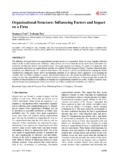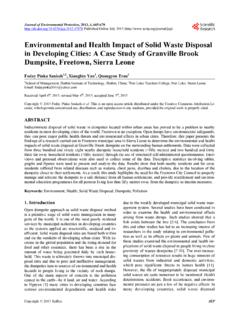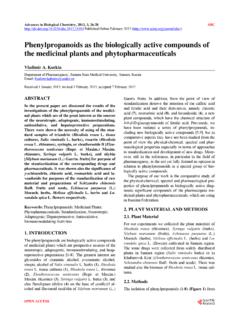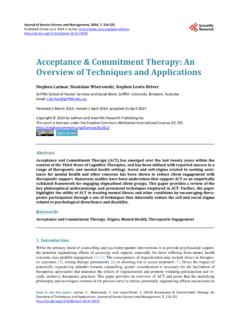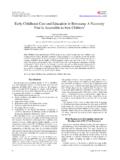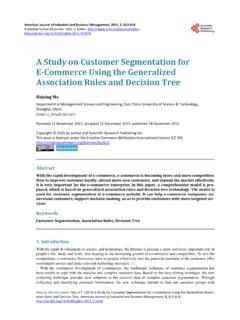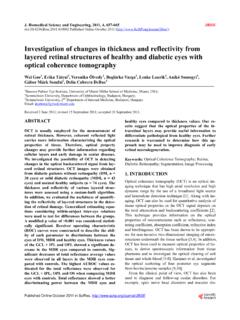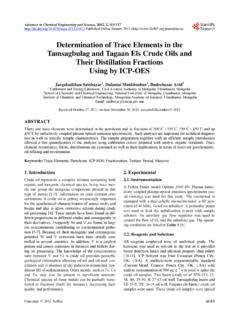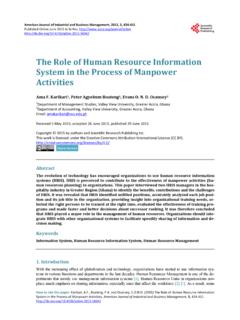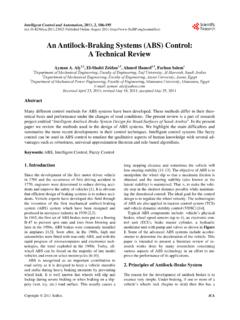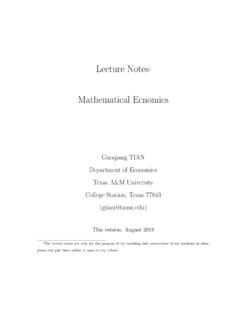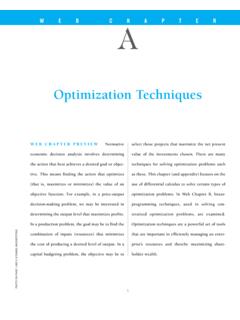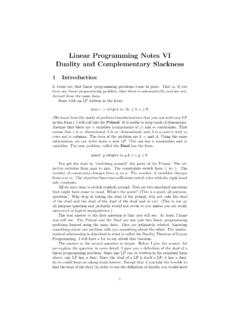Transcription of Analysis of the Load Flow Problem in Power System Planning ...
1 Energy and Power Engineering, 2015, 7, 509-523 Published Online September 2015 in SciRes. How to cite this paper: Afolabi, , Ali, , Cofie, P., Fuller, J., Obiomon, P. and Kolawole, (2015) Analysis of the Load Flow Problem in Power System Planning Studies. Energy and Power Engineering, 7, 509-523. Analysis of the Load Flow Problem in Power System Planning Studies Olukayode A. Afolabi, Warsame H. Ali, Penrose Cofie, John Fuller, Pamela Obiomon, Emmanuel S. Kolawole Department of Electrical and Computer Engineering, Prairie View A&M University, Prairie View, USA Email: Received 10 August 2015; accepted 27 September 2015; published 30 September 2015 Copyright 2015 by authors and Scientific Research Publishing Inc.
2 This work is licensed under the Creative Commons Attribution International License (CC BY). Abstract Load flow is an important tool used by Power engineers for Planning , to determine the best opera-tion for a Power System and exchange of Power between utility companies. In order to have an ef-ficient operating Power System , it is necessary to determine which method is suitable and efficient for the System s load flow Analysis . A Power flow Analysis method may take a long time and there-fore prevent achieving an accurate result to a Power flow solution because of continuous changes in Power demand and generations. This paper presents Analysis of the load flow Problem in Power System Planning studies. The numerical methods: Gauss-Seidel, Newton-Raphson and Fast De-coupled methods were compared for a Power flow Analysis solution.
3 Simulation is carried out us-ing Matlab for test cases of IEEE 9-Bus, IEEE 30-Bus and IEEE 57-Bus System . The simulation re-sults were compared for number of iteration, computational time, tolerance value and conver-gence. The compared results show that Newton-Raphson is the most reliable method because it has the least number of iteration and converges faster. Keywords Load Flow, Bus, Gauss-Seidel, Newton-Raphson, Fast Decoupled, Voltage Magnitude, Voltage Angle, Active Power , Reactive Power , Iteration, Convergence 1. Introduction In a Power System , Power flows from generating station to the load through different branches of the network. The flow of active and reactive Power is known as load flow or Power flow.
4 Load flow Analysis is an important tool used by Power engineers for Planning and determining the steady state operation of a Power System . Power O. A. Afolabi et al. 510 flow studies provide a systematic mathematical approach to determine the various bus voltages, phase angles, active and reactive Power flows through different branches, generators, transformer settings and load under steady state conditions. The Power System is modeled by an electric circuit which consists of generators, trans-mission network and distribution network [1]. The main information obtained from the load flow or Power flow Analysis comprises magnitudes and phase angles of load bus voltages, reactive powers and voltage phase angles at generator buses, real and reactive Power flows on transmission lines together with Power at the reference bus; other variables being specified [2] [3].
5 The resulting equations in terms of Power , known as the Power flow equations become non-linear and must be solved by iterative techniques using numerical methods. Numerical methods are techniques by which mathe- matical problems are formulated so that they can be solved with arithmetic operations and they usually provide only approximate solution. For the past three decades, various numerical Analysis methods have been applied in solving load flow analy-sis problems. The most commonly used iterative methods are the Gauss-Seidel, the Newton-Raphson and Fast Decoupled method [4]. Also with the industrial developments in the society, the Power System kept increasing and the dimension of load flow equation also kept increasing to several thousands.
6 With such increases, any numerical mathematical method cannot converge to a correct solution. Thus Power engineers have to seek more reliable methods. The Problem that faces Power industry is how to determine which method is most suitable for a Power System Analysis . In Power flow Analysis , a high degree accuracy and a faster solution time are required to determine which method is best to use. Hand calculations are suitable for the estimation of the operating characteristics of a few individual circuits, but accurate calculations of load flows or short circuits Analysis would be impractical without the use of com-puter programs. The use of digital computers to calculate load flow started from mid 1950s. There have been different methods used for load flow calculation.
7 The development of these methods is mainly led by the basic requirement of load flow calculation such as convergence properties, computing efficiency, memory require-ment, convenience and flexibility of the implementation [5]-[9]. With the availability of fast and large size digi-tal computers, all kinds of Power System studies, including load flow, can now be carried out conveniently [10]. The numerical method provides an approach to find solution with the use of computer, therefore there is need to determine which of the numerical method is faster and more reliable in order to have best result for load flow Analysis . This paper compares numerical methods: Gauss-Seidel, Newton-Raphson and Fast Decoupled methods use for load flow Analysis ; for test cases of IEEE 9-Bus, IEEE 30-Bus and IEEE 57-Bus System to determine which of the method is best for Power System Planning studies.
8 2. Bus Classification A bus is a point or node in which one or many transmission lines, loads and generators are connected. In a pow-er System study, every bus is associated with 4 quantities, such as magnitude of voltage (|V|), phase angle of voltage ( ), active Power (P) and reactive Power (Q) [2] [3] [11] [12]. Two of these bus quantities are specified and the remaining two are required to be determined through the solution of equation [13]. The buses are classi-fied depending on the two known quantities that have been specified. Buses are divided into three categories as shown in Table 1. Slack Bus This is used as a reference bus in order to meet the Power balance condition. Slack bus is usually a generating unit that can be adjusted to take up whatever is needed to ensure Power balanced [12].
9 The effective generator at this bus supplies the losses to the network, this is necessary because the magnitude of the losses will not be known until the calculation of the current is complete. Slack bus is usually identified as bus 1. The known varia-ble on this bus is |V| and and the unknown is P and Q. Generator (PV) Bus This is a voltage control bus. The bus is connected to a generator unit in which output Power generated by this bus can be controlled by adjusting the prime mover and the voltage can be controlled by adjusting the excitation O. A. Afolabi et al. 511 Table 1. Bus classification. No. Type of Bus Variables P Q |V| 1 Slack Bus Unknown Unknown Known Known 2 Generator Bus (PV) Known Unknown Known Unknown 3 Load Bus (PQ) Known Known Unknown Unknown of the generator.
10 Often, limits are given to the values of the reactive Power depending upon the characteristics of individual machine. The known variable in this bus is P and |V| and the unknown is Q and [8] [12]. Load (PQ) Bus This is a non-generator bus which can be obtained from historical data records, measurement or forecast. The real and reactive Power supply to a Power System are defined to be positive, while the Power consumed in a Power System are defined to be negative. The consumer Power is met at this bus. The known variable for this bus is P and Q and the unknown variable is |V| and [8] [12]. 3. Power Flow Analysis Methods The numerical Analysis involving the solution of algebraic simultaneous equations forms the basis for solution of the performance equations in computer aided electrical Power System analyses for load flow Analysis [4].
